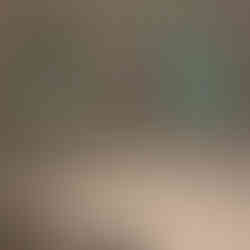Kio Griffith at Rio Hondo College Gallery
- artandcakela
- May 22, 2019
- 4 min read
Updated: Jan 27

Kio Griffith, Operations Room, Rio Hondo College Gallery; Photo credit Dani Dodge
Operations Room: The First of Three Linked Exhibitions from Kio Griffith
Rio Hondo College Gallery, Whittier
Written by Genie Davis Both delicate and ominous, deeply moving and poignantly disturbing, Kio Griffith’s operations room, just closed at Rio Hondo College Gallery in Whittier, is the first of three linked exhibitions that the artist is presenting this year. Griffith will be opening Sound Pedro at Angels Gate Cultural Center for one night only on June 1, 6-10pm, and the exhibition at Alpha Romeo Tango Gallery on the USS Iowa on June 22nd.
The exhibitions are each themed, according to Griffith, “around the unheroic battle of the Pacific War that is closely tied in with the bi-cultural lineage of the American and Japanese sides of my family history.”
The perfectly curated exhibition at Rio Hondo featured images focusing on the radar antennae on warships; with a main room centered by wooden sculptures that represent the antennae of these ships. At first look, these beautiful, fragile sculptures could also be taken to represent the skeletons of cities destroyed by bombs launched from those warships. They are also evocative of origami, graceful and even wing-like.
From the main room, through a site-specific opening in a moveable wall, viewers could glimpse a spooky, revolving green radar-like code-generated animation that reveals and illuminates the frame of an actual warship over a projection of historical battle footage. It’s a riveting and potent image, a physically in-motion blueprint not just of a ship or a battle but of the haunting “bones” of a war. The image gives viewers a look at both the fictions of war and the reality of its history.
The animation is projected along with an immersive sound installation specially created for the exhibition through the media department at Rio Hondo College, according to gallery director Robert Miller. Ominous and imperative, it adds to the emotional resonance of the exhibition.
Directly beneath the video a light was hung from the ceiling, a light such as one would see illuminating a real operations room, suspended above a map or a blueprint for battle. Reflected on its metal hood, the image of the digital ship flashes its compelling pale, intense, green. The light illuminated a blackened sculptural piece that represents the geography and battle plans of warfare in the Pacific; but it also stands as a metaphoric game board. Just as battle plans themselves could be viewed as “games” of a sort – cat and mouse, chess, more elaborate rituals – so are many children’s games representative of warfare rituals. These games have become a part of our collective culture, games such as Risk, Axis and Allies, Memoir ’44, Stratego, or Battleship. The blackened images on this board/map were created to represent a very specific real battle, and the sweeping circular image of a revolving radar signal.
Other smaller such sculptures were arranged in corners and mounted to walls throughout the exhibition. At first glance, these sculptural works could also be viewed as representations of bomb-leveled cities and villages. Whether representing such devastation or serving as a look at children’s games that represent war games, there is something both devastating and beautiful in them, and something tragic in what they represent.

Kio Griffith, Operations Room, Rio Hondo College Gallery; Photo credit Dani Dodge
The final element of the exhibition were wall-displayed collections of articles and plans, thick and marked-up, written descriptions that could represent either the instructions of games and kits that simulate war, plans for the construction of real tools of war such as bombs and radar systems, or simply a collection of materials about war and its aftermath that are all too available for everyone, even children, to read and absorb. As with each work in the exhibition, these felt elegiac, but at the same time they also exuded the sense of warning and approbation.
Griffith says that the exhibition was inspired by the reminiscences of his aging mother, now 83. After years of silence, she has now begun disclosing her experience of her family’s flight from the Tokyo Air Raids. Although the actions of war had the structure of games, competitive battles that included fake wins and ultimate losses, war itself had a long-lasting legacy both for the Japanese people and for her family, personally. Griffith is also inspired by the poetry of Tanikawa Shuntaro, whose spiritually-based reflections fit well with the somber but beautiful exhibition, it’s rituals and relics, the dark and frightening psychological aspects of a night raid conducted from the sea, the legacy of war as an emotional scar on children of war, and on all children.
This is an exhibition that viewers won’t soon forget, and its next installments promise to plunge hearts and minds deeper into the tragedy and surprising elements of beauty in the all-too-real game of war.
Rio Hondo College Gallery 3600 Workman Mill Road, Whittier, 90601
#losangeles #california #losangelesartist #art #painting #shoeboxpr #RioHondoCollegeGallery #geniedavis #laverne #losangelesart #contemporaryart #southerncalifornia #abstract #collage #artgallery #artinterview #gallery #museum #artandcake #artexhibition #installation #fineart #artist #Whittier #soloshow #mixedmedia #arts #artreview #artmagazine #ArtandCulture #exhibition #exhibit #kiogriffith










































